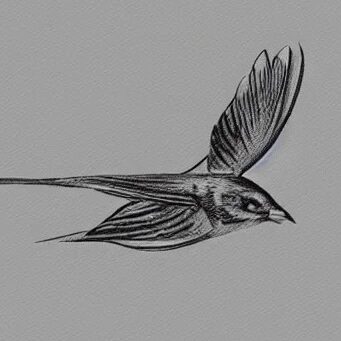Toe fractures and injuries in birds are common occurrences that can range from mild to severe. Knowing how to identify and treat broken toes in birds can be crucial for successful recovery. This article will cover the causes, symptoms, and treatments of toe fractures and injuries in birds.
It is important to be able to recognize the signs of a toe fracture or injury in a bird. Some common symptoms include swelling, discoloration, and the bird’s reluctance or inability to bear weight on the affected toe.
If you suspect that a bird has a broken toe, it is important to seek veterinary care as soon as possible. The veterinarian will likely conduct a physical examination and may order X-rays to determine the extent of the injury.
Treatment for a broken toe in a bird may involve immobilization of the toe with a splint or bandage. In some cases, surgery may be necessary to realign and stabilize the fractured bone. Pain medication and antibiotics may also be prescribed to manage pain and prevent infection.
While a bird is recovering from a broken toe, it is important to provide a comfortable and safe environment. This may include providing perches of varying diameters and textures to reduce pressure on the injured toe.
With proper treatment and care, most birds can recover from a broken toe and regain full mobility. However, it is important to monitor the bird closely and follow all veterinary instructions to ensure a successful recovery.
Contents
Key Takeaways
- Birds can break their toes due to various causes such as being stepped on by another bird or human, getting caught in cage wire or objects, or being bitten by other animals.
- Prompt veterinary treatment is important for toe fractures to prevent further complications.
- Mild breaks or hairline fractures can heal on their own within 6-8 weeks with proper care such as resting the foot, using ice to reduce inflammation, and applying compression with an elastic bandage.
- Foot fractures in birds can result from falls, getting caught in traps or objects, or being kicked or stomped by another bird. Symptoms include limping, swelling, and bruising.
Causes of Toe Fractures and Injuries
Fractures and injuries to the toes of birds can be caused by a variety of factors. These include being stepped on or caught in cage wire, bites from other animals or objects, and awkward attempts at flying or landing. Additionally, kicking or stomping by another bird can also cause fractures.
Symptoms of a broken toe include swelling, bruising, and limping. It is important to note that toe injuries can be serious and can lead to infection, amputation, or even death if not treated promptly.
To prevent toe injuries in birds, it is crucial to take necessary precautions. This includes providing an appropriate cage and avoiding contact with other animals.
Treatment and Healing
When it comes to treating and healing broken toes in birds, prompt and appropriate treatment is key to ensure successful recovery.
Mild hairline fractures may heal on their own within 6-8 weeks, while more severe fractures will require medical attention.
Resting the foot, applying ice, and using compression with an elastic bandage can help reduce pain and swelling.
Surgery or amputation may be necessary depending on the severity of the injury.
It is important to follow the veterinarian’s instructions for care and provide plenty of rest and TLC during the recovery process.
Toe injuries in birds can be serious and timely treatment is essential to prevent further complications.
Causes and Symptoms
Birds can suffer toe fractures or injuries when stepped on, caught in cage wire, or bitten by other animals. Common symptoms of a toe injury include limping, swelling, bruising, and bleeding.
Toe fractures can have varying degrees of severity and require prompt veterinary care. Treatment options include:
- Resting the foot and applying ice to reduce inflammation.
- Compression with a bandage to reduce pain and swelling.
- Surgery or amputation depending on the severity of the injury.
It is important to seek medical attention if the pain or tingling persists or worsens. With prompt treatment, the chances of a successful recovery are increased. However, birds can still survive with a broken foot, albeit with a decrease in mobility. Providing rest and TLC during the recovery period is essential for a successful outcome.
Survival and Mobility
Although birds can survive a broken foot, their mobility may be affected due to the severity of the injury. Treatment by an avian veterinarian is important to ensure the best chance of a successful recovery.
Rest and TLC are essential for the healing process, and an elastic bandage may be used to provide compression and reduce pain and swelling. In moderate to severe cases, surgery or amputation may be necessary.
| Mobility Affected | Survival Possible | Recovery Inevitable |
|---|---|---|
| Yes | Yes | No |
Severity and Treatment
Given the possible severity of toe injuries in birds, prompt veterinary treatment is essential to ensure the best possible outcome. Treatment may include surgery, amputation, or non-surgical treatment such as rest, ice, and compression bandage. These treatments will depend on the severity of the injury and the promptness of care.
Toe injuries can be serious and may lead to infection or amputation if not treated properly. Symptoms of a toe injury include bleeding, swelling, and limping. An avian veterinarian should be consulted as soon as possible to ensure the best chances of recovery.
With proper care, birds can survive with a broken toe, though their mobility may be limited.
Prevention
By taking preventative measures, bird owners can reduce the likelihood of a toe fracture or injury.
To prevent toe fractures, ensure that cages are well-built and properly secured, and regularly check the bird’s toes for any signs of entrapment or damage.
To prevent toe injuries, keep the area around the cage free of potential hazards, and avoid leaving any sharp objects, such as scissors or needles, lying around.
Additionally, it is important to provide a comfortable and stress-free environment for the birds, as stress can make them more prone to injury.
Finally, regularly check the bird’s feet and toes for any signs of damage or infection, and seek medical attention if any issues are noticed.
Taking these preventative measures can go a long way towards keeping your bird healthy and safe.
Recovery
Frequently, birds can recover from a broken toe with proper care and treatment. Recovery typically involves rest, anti-inflammatory medications, and compression with an elastic bandage. To ensure a successful recovery, it is important to seek veterinary attention and follow the instructions provided.
Here are some steps to follow for a successful recovery:
- Provide plenty of rest and care for the bird.
- Apply an ice pack to reduce inflammation.
- Keep the foot wrapped in a compression bandage to reduce swelling.
It is important to monitor the bird for any signs of infection and to keep the foot clean and dry. When the bird is fully recovered, it is important to take measures to prevent similar injuries in the future. This may include providing a safe environment and avoiding objects that could cause toe injuries.
Conclusion
Toe fractures and injuries can occur in birds due to a variety of causes. Symptoms of a broken toe can range from mild discomfort to severe pain and require medical attention. Treatment and healing of a broken toe can vary depending on the severity of the injury.
Prevention and proper care can help to minimize the risk of injury, and proper recovery can help ensure a successful outcome for the bird. By understanding the causes, symptoms, and treatments of toe fractures and injuries in birds, bird owners can help ensure their birds are able to live healthy and active lives.






